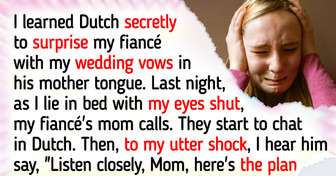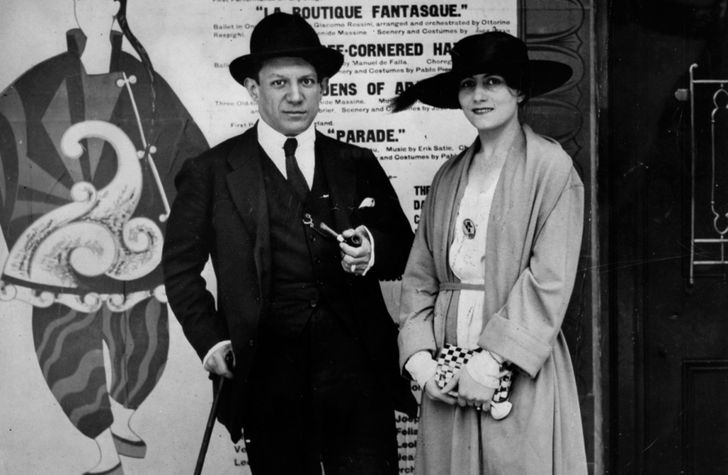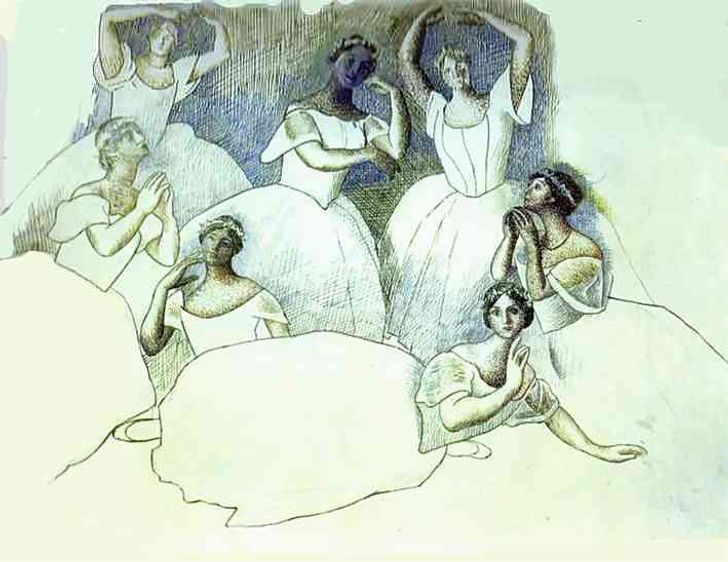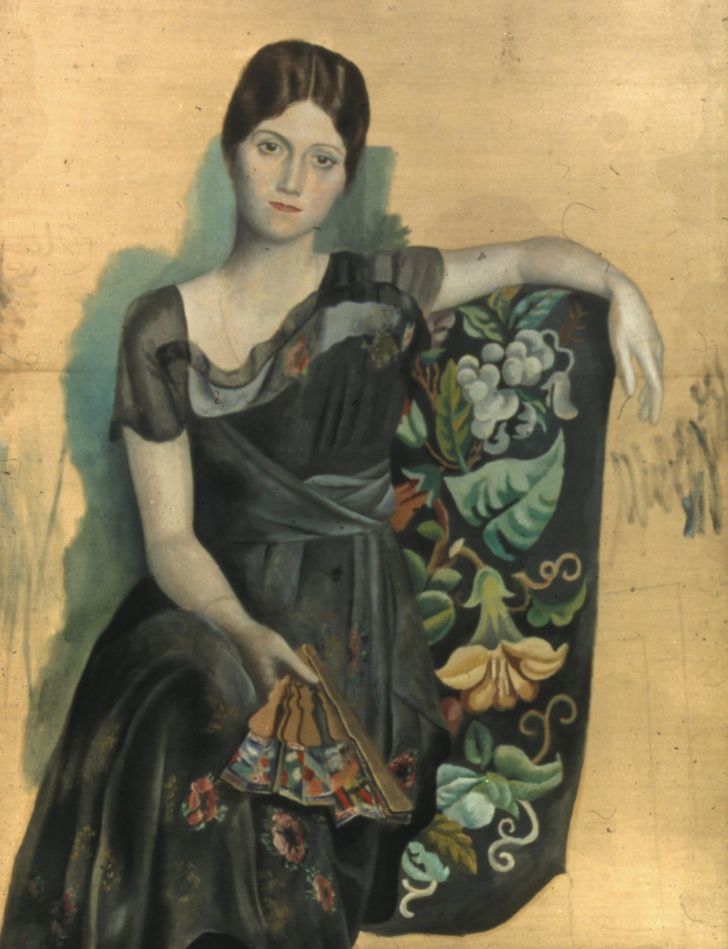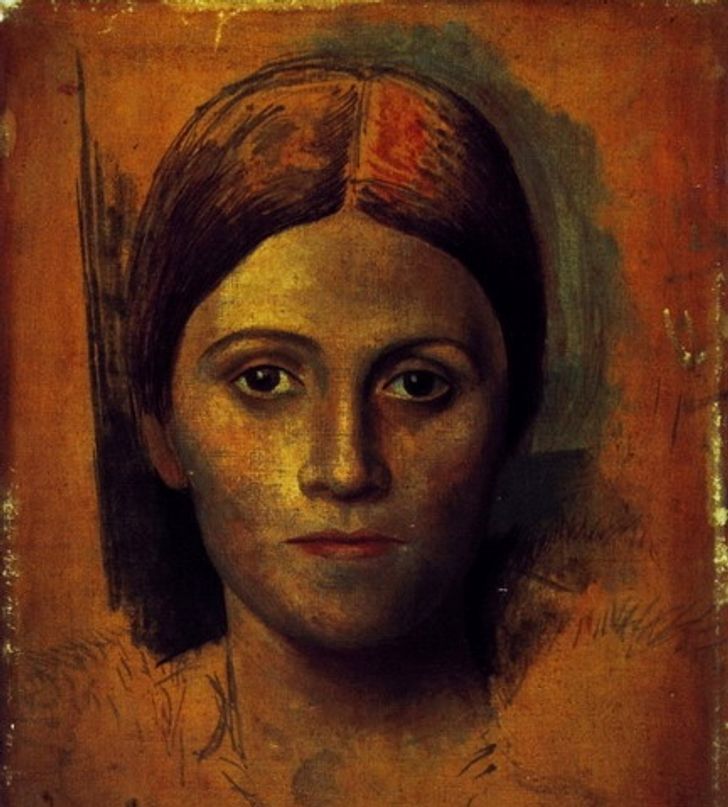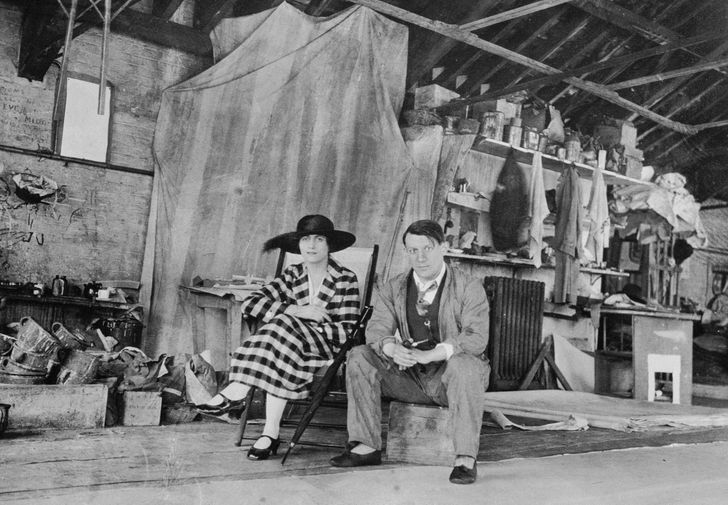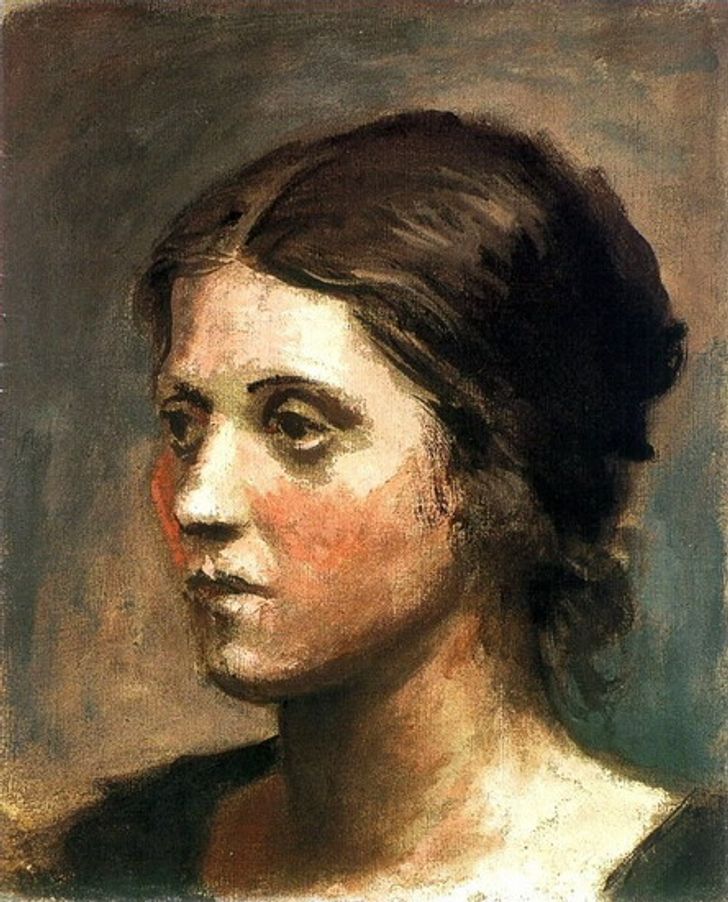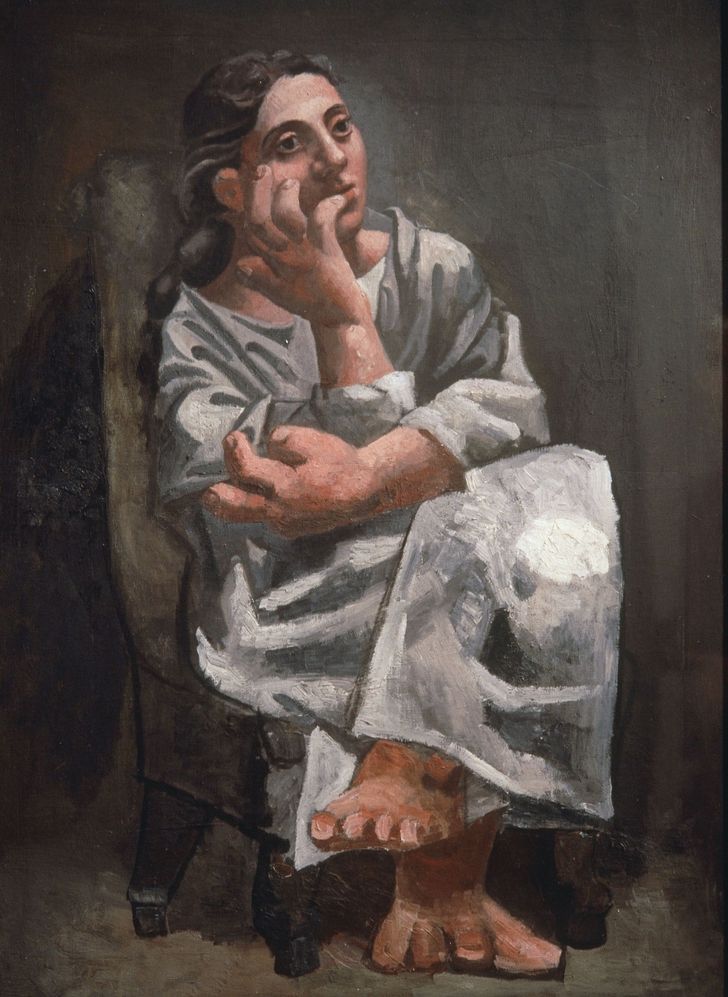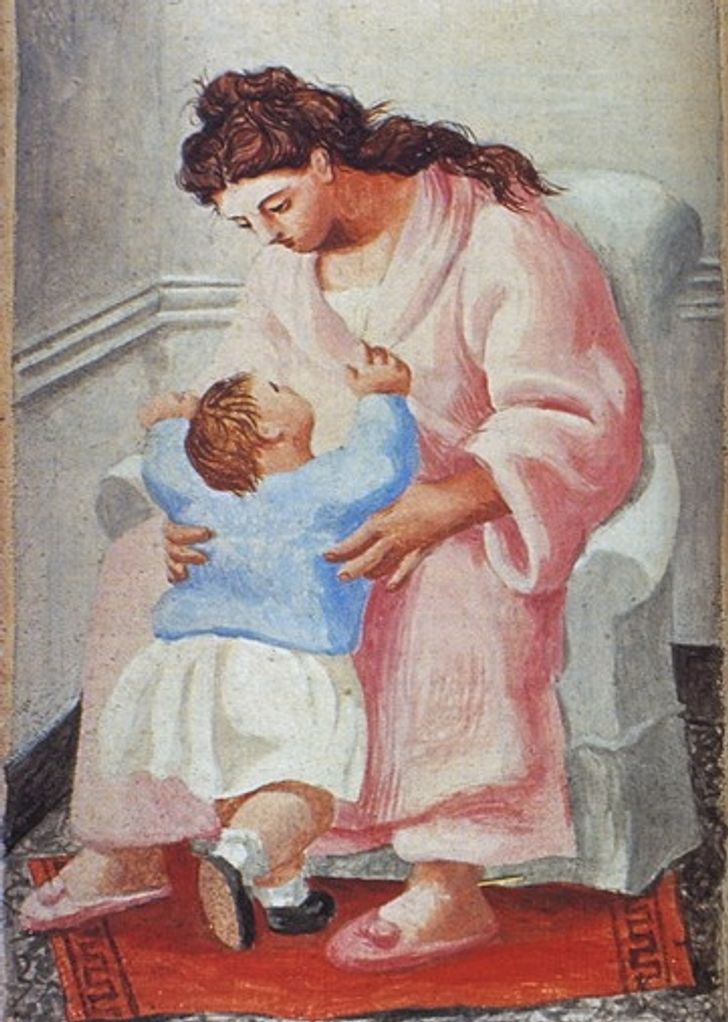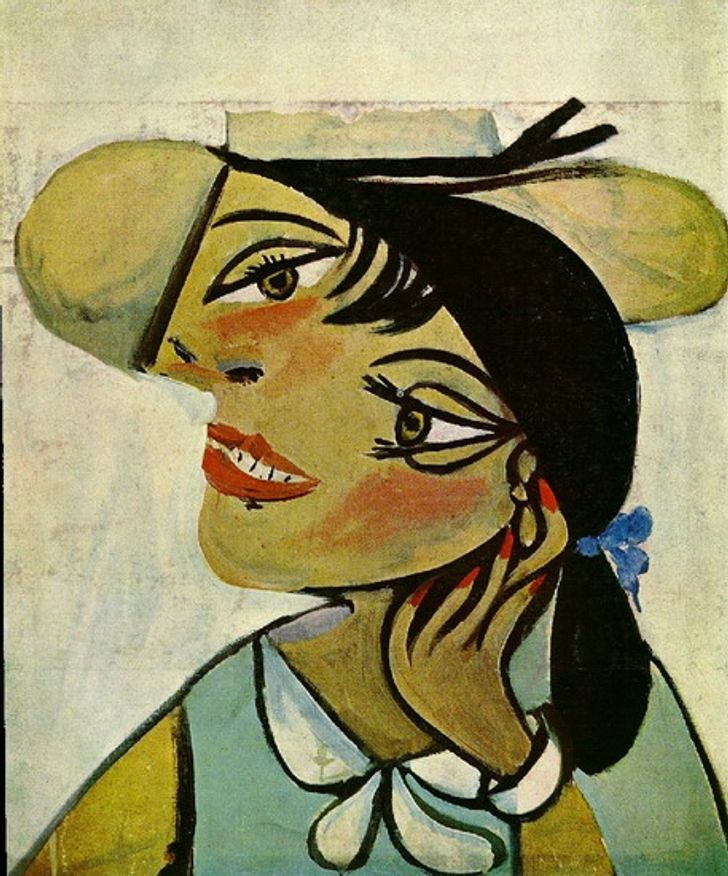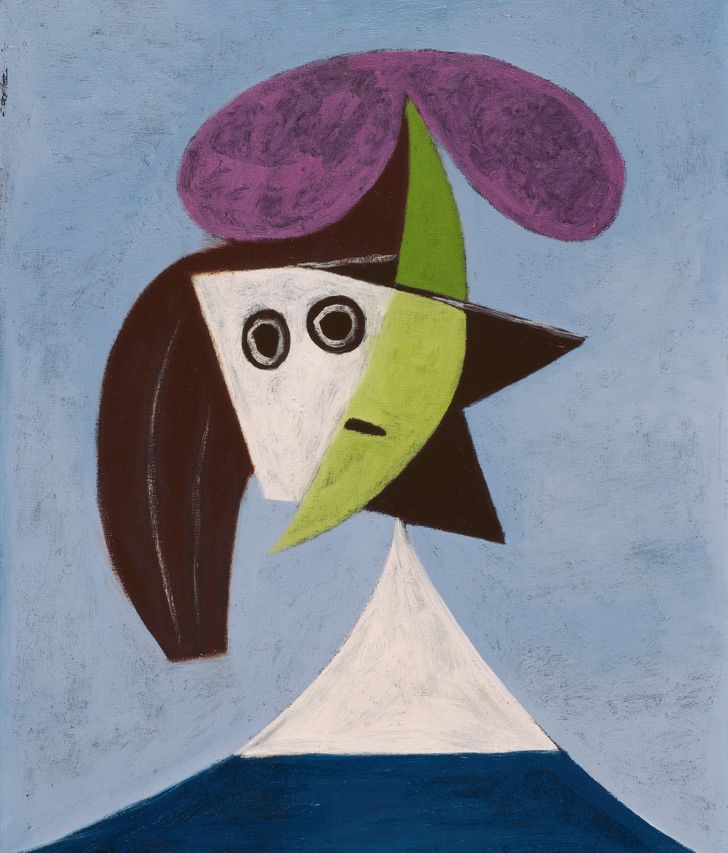People or art are unstable. The constantly need new emotions, something fresh, to keep work going
it also happens nowadays, that famous people get together and then divorce, because they got bored..
Picasso Drew Portraits of His Wife for Many Years, and They Show How His Attitude Toward Her Changed
If Pablo Picasso and Olga Khokhlova were modern-day celebrities and gave interviews to tabloids, when asked about the reasons why they broke up, they would most likely answer, “irreconcilable differences.” Atheism and faith, a hot temper, and melancholy — they were different in just about every aspect, including their tastes and their everyday behavior. Aside from that, almost all of Picasso’s close friends didn’t like Olga much and his mother personally advised him against the marriage.
We at Bright Side encourage you to read the story of their love, proving once again that beauty is in the eye of the beholder.
The wedding day of Picasso and Khokhlova. They are posing in front of the Parade ballet.
The 26-year-old ballet dancer and the 35-year-old avant-garde artist met at work. In a way, it was an office romance.
In Paris at war (it was the First World War), the new ballet show Parade was supposed to premiere. Its creators were going to shock the public. Olga Khokhlova took part in the rehearsals as a member of the Diaghilev ballet group, and Picasso worked on creating the original decorations and costumes for Parade.
So, the artist’s eye quickly noticed the most attractive muse among all the others.
Group of dancers. Olga Khokhlova is lying in the foreground, 1919-1920.
In the beginning, Olga was cautious with Picasso’s attention, and she said that his insisting compromised her. Diaghilev decided to help the passionate artist see that Russian girls, especially the ones from good families, are not ready to start romantic relationships. Picasso followed his recommendations so carefully that just one year later, Olga and he got married in Paris and even had a church wedding (because the bride wanted it) in the local Orthodox cathedral. This wasn’t enough for Picasso, so he offered her a prenuptial agreement that stated that 1/2 of all the his income belonged to his beloved wife.
Portrait of Olga in the Armchair, 1917
Before the wedding, there was an unpleasant incident. Because Pablo was a good son, he decided to share the good news with his mother and introduce Olga to her. Señora Picasso was not delighted about the news and she also told her future daughter-in-law that her son was a bad choice. She said that he was unable to make any woman happy. According to her, Pablo was too obsessed with himself. But people in love rarely pay attention to these warnings...
Portrait of Olga Khokhlova, 1918
After the wedding, the newlyweds moved into a new 2-story apartment. Olga didn’t do any ballet, partially because she had had a recent leg injury that happened by accident, and partially because of her new marital status. One year after they got married, Picasso received a letter from Sergey Diaghilev where he invited Pablo to come to London and also asked about his wife:
“And what about Olga? Has she really abandoned the art of dance? This is quite sad! Massine regrets this as a choreographer, and I as a former fan.”
But Madame Picasso was not interested in dance anymore and she drew all of her attention to their house. The artist’s friends who had gotten used to his bohemian lifestyle were amazed at Picasso’s expensive suits, his golden watch, a man driving his car, and at the perfect order in his house. Well, at least, in one part of the house, on one of the 2 floors. On the second, Picasso had his workshop where he didn’t care much about how it looked. But the first floor was elegant, very stylish, and very clean. Olga was in charge of it.
Pablo Picasso and Olga Khokhlova in the workshop, 1919
Just like any talented person, Pablo had a soft spot for experiments. He was in a constant search of new forms and new sources of inspiration. It’s safe to say that his entire new lifestyle, his beautiful aristocratic wife, his suits, his butlers, his drivers, his purebred dogs — all this was sort of an experiment. A new form of art, life as art. At about the same time, he became interested in neo-classicism. Biography experts tell a popular story about a time when Olga once looked at her husband’s painting and told him that she wanted to be able to recognize her face in his paintings. And allegedly, after that, Picasso moderated his interest in avant-garde and went on to more classical forms.
Portrait of Olga, 1919
We can’t say that Olga had very ordinary interests. Her grandson Bernard Ruiz-Picasso (now co-founder of the Picasso Museum in Malaga with his mother Christine Ruiz-Picasso, and is president of its Advisory Committee) remembers today how his grandmother was not afraid of leaving her home when she was quite young and leaving her entire family behind in Russia. She got the job on the Diaghilev team which was very popular at that time and she was even friends with Coco Chanel. So, she was a bright, smart, and open-minded woman.
The family life of the couple was pretty smooth in the beginning and the only bad things were the worrying letter from Russia. In 1919, Olga received news from home that her father, an army general, had disappeared, and her brothers were fighting in the Civil War. Her mother and her sisters were starving. She sent them money and her husband’s paintings hoping they would help them survive the difficult times, but the postal service was terrible at the time and there was no guarantee that the packages would reach them.
At this period of their marriage, Picasso often drew Olga as a reflective and sad woman, deep in her thoughts. It wasn’t because he was inspired by sadness and asked his wife to make serious faces, but because at that time, Olga really was in this mood pretty often.
Seated woman (Olga), 1920
A great distraction for Olga and a new source of pride and inspiration for Picasso was their son Paulo. The boy was born in 1921. Thanks to him, Olga sort of returned back to life: in the painting and photos, she smiles a lot and looks happy. Picasso drew a lot of very tender portraits of his wife and their little son.
Mother and Child, 1921
Sometime later, Pablo was either tired of playing this role or was sick of his friends’ jokes about his lifestyle, and a sort of falling out started in the family. Pablo was very tired of the endless social events and dinners, and according to him, Olga was too invested into her son: she allowed him to do too much and was too protective of him. Pablo started to express all of his bad feelings toward his wife in his paintings. He was irritated with her love for trendy clothes, the people around her, and even her way of thinking.
Portrait of woman in d`hermine pass (Olga), 1923
In January 1927, Picasso met 17-year-old Marie-Thérèse Walter and the title of muse passed from Olga to her. Several years later, everyone knew what was going on. Walter gave birth to Picasso’s daughter. After Khokhlova found out about her husband’s second life, she took Paulo and left immediately. Picasso tried to get divorced from her but the prenuptial agreement that they had signed many years ago forced him to split all of his property into 2 halves. The artist refused to give away his work and there were other legal troubles, so Olga remained his wife until the day she died in 1955.
Head of a Woman in a Hat, 1935
After they broke up, Olga’s reputation and health took a huge toll on her. Picasso himself said nasty things about her several times, especially when she would start a fight or speak out against him. Olga felt betrayed and she kept sending letters to him that were full of sadness. She also sent Picasso pictures of his son and she would even follow him on the street, yelling, “You shouldn’t pretend that I don’t exist!”
While both the ballet dancer and the artist were alive, the public supported Picasso. His charisma and his success in art made people forget that both of them were to blame.
By the way, Marie-Thérèse Walter was only Pablo’s inspiration for a short time. He changed muses regularly and sometimes they even met each other. One of the women even quotes Picasso’s words when Walter and another of Pablo’s lovers insisted on him making a choice between them, “I was satisfied with things as they were. I told them they’d have to fight it out themselves. So they began to wrestle. It’s one of my choicest memories.”
What do you think, did this story even have a chance to end well?
Comments
Related Reads
I Asked My Son’s Ex-Wife to Join Our Holiday Dinner — It Ended in Disaster

I Spent 20 Years Paying the Mortgage—Only to Find Out My Husband Gave Our Home to His Mom

19 Funny Things People Said After Anesthesia That Can Make You Laugh Harder Than Getting Tickled

16 Supermarket Stories That Have an Unexpected Twist

I Refused to Split My Son’s Inheritance With My Other Son

I Invited My Son’s Ex-Wife to Thanksgiving Dinner — It Ended Tragically

I Expected Something Special for My 50th Birthday — His Gift Left Me Humiliated
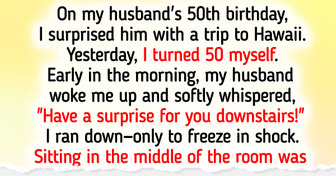
My Wife Told Me She’s Pregnant, but She Doesn’t Know I’ve Actually Had a Vasectomy

I Denied My MIL Access to My Baby—So She Dared to “Teach Me a Lesson”
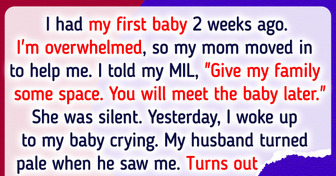
A Woman Tried to Steal My Seat on the Plane Using an Unsettling Tactic
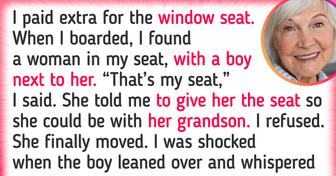
15+ Stories That Prove Most Children Are a Reflection of Their Parents

I’m Utterly Shocked After Overhearing My Fiancé and His Mom’s Malicious Plot Against Me
